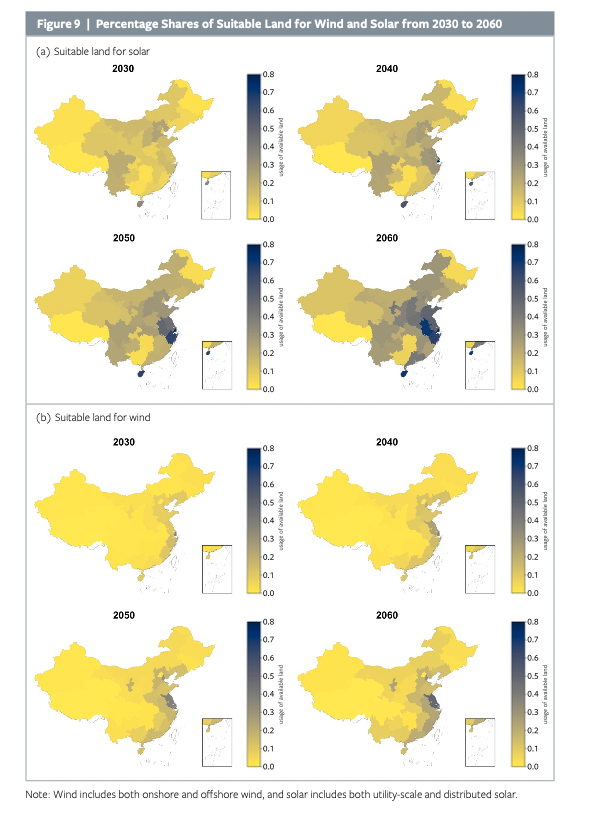China has many pathways to reach its decarbonization goals. All of them require a large increase in low-carbon renewable energy and complementary infrastructure, including storage and transmission. How can China plan for this transformation? What steps are necessary to consider in the near- and long-term? A new California-China Climate Institute report, produced with colleagues from UC San Diego’s Power Transformation Lab and the Institute of Energy, Environment and Economy at Tsinghua University, developed a novel modeling approach with a high spatial and temporal resolution to identify feasible and efficient pathways for deploying renewables, storage systems, and transmission lines, by decade, from 2020 to 2060. This new research highlights potential changes to the energy technology choices, the pace of renewable deployment, and the uneven local impacts over time and space.
By examining the temporal deployment trends, localized impacts across regions and to support forthcoming challenges and uncertainties, we identify the following policy recommendations:
- The national government should incorporate the deployment needs of renewables, storage, and transmission lines into policy and financing frameworks. Our results demonstrate that higher rates of deployment beyond 2030 will be necessary to meet carbon neutrality targets, with annual installations of wind and solar increasing from 70 Gigawatts (GW) per year in the first decade to 210-300 GW per year in the last decade across scenarios. These deployment targets should be reassessed and specified clearly in upcoming Five-Year Plans.
- The national government should consider setting up and improving renewable portfolio standards (RPS) at the provincial level to sustain short-term deployment rates and ramp up deployment in the long term. To encourage the desired level of investment in the near term, our results further indicate that renewable portfolio standards will be essential in driving down project costs by promoting market adoption, especially for technologies that currently still have high capital costs but play important roles in future power systems, such as distributed solar, offshore wind, and battery storage.
- Given that large-scale wind and solar is land-intensive, land use impacts become more prominent in eastern provinces in later decades, both national and local efforts are necessary to promote the best use of land resources and to manage the trade-offs among various land uses. The figure below demonstrates how areas that are suitable for wind and solar change over time.

- There is a need to consider the political and economic implications of the potential local opposition to expansion of the inter-provincial transmission network and the needs of coal-dependent communities during the transition to clean energy.
- Electricity market reforms are essential to ensure efficient and stable grid operations. National and local governments should continue this work including building on successful provincial pilots. Local governments should update time-of-use tariffs to further promote the deployment of distributed energy resources, while incorporating the need to reflect the changing system costs based on provincial and regional market conditions.
For more details:
Read the Full Report in English.
Read the Summary for Policymakers in English.
Read the Summary for Policymakers in Mandarin.

